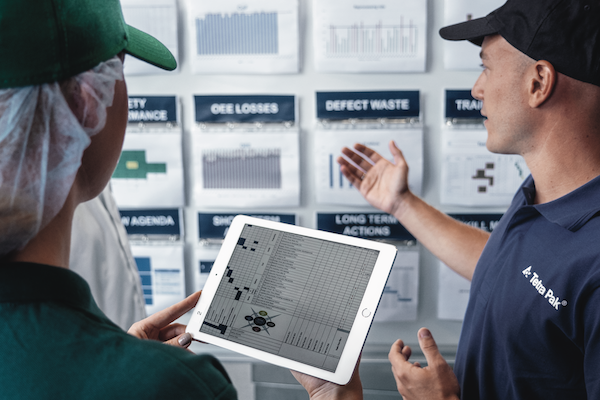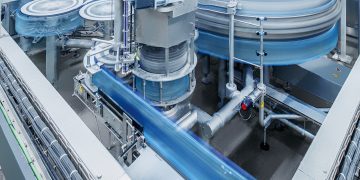It’s not hard to make the case for why tackling food loss and food waste is important to sustainability. About one-third of food produced globally never gets consumed. And food waste accounts for about 8 percent of global greenhouse gas emissions.
The food and beverage industry has a role to play by reducing food waste in companies’ operations, and by giving consumers products that are less likely to lead to waste. There is good reason (beyond sustainability) for the industry to pay attention — whether you’re a retailer, a manufacturer or a food brand — because consumers care about this issue. According to the Tetra Pak Index 2020, 77 percent of consumers say food waste is a concern, putting it on par with climate change.
Before we get to the role of industry, it’s important to understand the difference between food loss and food waste. Food loss is caused by inefficient growing, processing or preservation — in other words, food that fails to make its way to retail. A number of considerations in food manufacturing can reduce food loss. Increasing efficiencies can reduce product loss before food even leaves the factory, in addition to a number of other sustainability benefits.
Food waste occurs at the stages of distribution, retail and consumption by consumers. Because it’s driven by the short shelf life of food, we can ensure food is packaged to optimize shelf life. A variety of factors can protect and extend the life of the product.
Understanding where food loss happens in manufacturing
Once raw ingredients arrive at a plant for processing, there are many reasons those ingredients don’t make it out of the factory. The first step in tackling food loss at the factory is understanding where it is happening.
Modern automation systems, such as Tetra Pak PlantMaster, enable food and beverage manufacturers to track all product movements within their facilities. This data allows them to build a baseline to understand where and why food loss is happening, and where investments can be made for improvements.
Another way to understand and reduce food loss at the plant is by implementing a methodology such as Total Productive Maintenance (TPM). TPM is a holistic approach to working and equipment maintenance that aims to reduce stops and breakdowns. This method will not only help improve the overall productivity of a plant, but also help in mapping all the sources of waste and loss. For example, plant operators may find they are having a lot of starts and stops in the packaging process, which leads to liquid food loss. By implementing TPM, one food and beverage manufacturer was able to reduce its food loss by 3.6 million pounds.
Another pain point in processing with a significant amount of liquid food loss is the mix phase when the processing system switches from water to product and vice versa. This mix phase transition occurs between every batch, typically with numerous batches per day, per processing system. Recently at one of my customers’ sites, we implemented a solution that lessens the duration of the mix phase without compromising on product quality. This resulted in a 20.5-gallon reduction in product loss per transition, saving the company more than 24,500 gallons of product per system, per year. These savings can add up quickly.
Quality loss is another area to look at, and which would a focused improvement project under the TPM methodology would address. When manufacturers conduct internal quality sampling, they are de facto creating food loss. And some manufacturers are sampling up to 2 percent of their finished product. Once a sampling plan can be standardized, the sampling rate is reduced from 1 percent to 1.2 percent without compromising on quality or food safety.
Minimize food waste with packaging
Once food has escaped being lost during the production process, ample other opportunities can prevent it from becoming food waste. While food and beverage manufacturers don’t have much control over what logistics operators, retailers or consumers do, they can determine the packaging. The right packaging can extend shelf life and increase the odds of being consumed.
At the most basic level, good packaging must keep food safe to eat and free from bacteria or other contamination. A package is a physical barrier that keeps oxygen, water vapor and other particles out. Some packages protect from light, and others are used with processing techniques that extend shelf life.
A package should also protect the quality, integrity and taste of the product to ensure consumers don’t throw it out. Especially if your products contain functional, value-added ingredients, such as omega-3 fatty acids or vitamins, you need a package that will not compromise their effectiveness, bringing benefits to the consumer.
One final packaging consideration: Does it need to be chilled throughout the supply chain? Packages that require refrigeration are susceptible to spoiling if something goes awry during chilled transportation and storage to retail, or if consumers fail to get them into their fridge at home. However, a package that is shelf-stable will be perfectly fine unopened even if the power goes out. As an added bonus, a package that doesn’t require chilled transportation will cut down on transportation-related energy needs, while still maintaining the quality of the product and preventing food waste.
Having sound, thoughtful approaches to food processing and packaging is the entry point on the road to preventing food loss and waste. By optimizing processing, you’re ensuring more food makes it out the door and on its way to consumers. And by making smart packaging choices, you can ensure that products have a higher success rate of making it through the supply chain and being enjoyed by consumers.


















